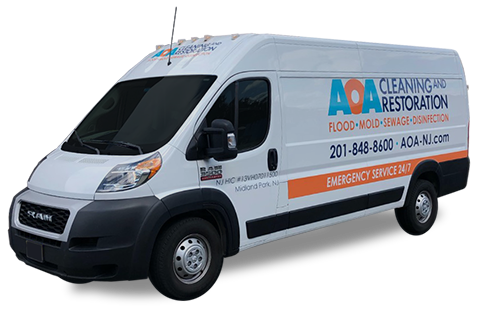Did you know that 93% of chronic sinus infections are linked to mold, a Mayo Clinic study found? This fact shows how important it is to tell water damage from mold growth. Water damage and mold often go together, making it hard for homeowners and managers to deal with.
To figure out if water damage is mold, you need to know the signs. Water damage itself doesn’t spread. But, if damp areas aren’t fixed quickly, mold can grow. Mold spreads through air spores, landing on wet surfaces and growing fast.
Signs of mold include stains, discoloration, and damage on walls and ceilings. The musty smell of mold is a better warning than just seeing it. Moisture from leaks or floods helps mold grow. To stop more damage, getting mold removed and fixing the moisture source is key.
Key Takeaways
- Water damage can often lead to mold growth if not promptly addressed.
- Mold spreads via air spores and requires moist environments to grow.
- Visible stains, discoloration, and deterioration are signs of possible mold due to water damage.
- The musty smell of mold is a strong indicator, more reliable than visual signs alone.
- Accumulated moisture from leaks and flooding fosters mold growth.
- Professional mold removal and moisture source repair are necessary to prevent ongoing damage.
Signs of Mold from Water Damage
Spotting mold from water damage is key to a healthy home. Look for unusual colors and textures that don’t match typical water damage. Mold can be black, gray, green, or blue. It might feel fuzzy, powdery, or slimy, showing it’s growing.
Mold can also smear when you touch it, unlike other stains. This is a clear sign of mold.
Many mold types, like Aspergillus, Cladosporium, and Penicillium, have unique colors. They can be more than just black or gray. A musty smell is another big clue. This smell can stick around even when mold isn’t easy to see.
Knowing these signs helps you act fast when water damage happens. This can stop mold from spreading too far.
Detecting Mold After Water Damage
Finding mold after water damage needs a mix of careful looks and special tools. First, look for any discolored spots on surfaces and follow any musty smells. Watch for damp walls, near plumbing, and water marks on ceilings that might mean mold is growing above.
Experts use moisture meters and infrared cameras to find mold in hidden spots. These tools help spot moisture that mold needs to grow. They also check ventilation systems and other hard-to-see places. Professional mold testing is key to finding mold by analyzing air and surface samples. This helps figure out how to fix the mold problem right.
Why Water Damage Often Leads to Mold Growth
Mold growth in water-damaged areas is mainly due to moisture. Molds need moisture and nutrients from materials like wood and insulation to grow. They can start growing in just 24-48 hours after water damage if not dried quickly.
Being exposed to mold can cause health problems. Symptoms include sneezing, coughing, and throat irritation. These issues are worse for people with asthma. Mold can also lead to lung infections and long-term respiratory damage.
It’s important to dry affected areas quickly and fix any leaks to stop mold. Knowing how moisture affects mold growth helps prevent health risks. Homeowners and managers can take steps to protect their health and property.
Conclusion
It’s important to tell mold from water damage to keep our homes safe. Signs like musty smells and spots on walls mean we need to check for mold. This is the first step to stop mold before it grows.
Fixing moisture problems quickly helps stop mold from spreading. Regular checks, drying wet spots fast, and getting help from mold experts are key. These steps help keep our homes mold-free and healthy.
Knowing how to handle mold is vital. Experts can find and fix mold problems well. By following these steps, we can keep our homes clean and safe from mold.




















